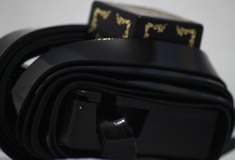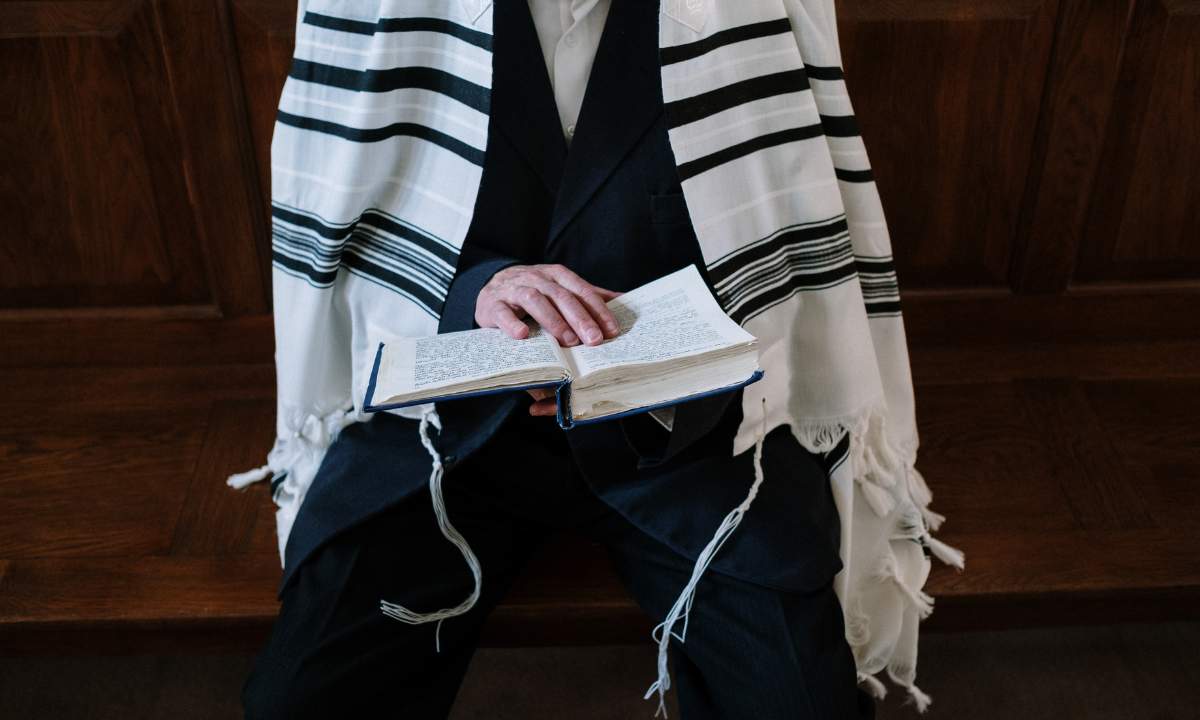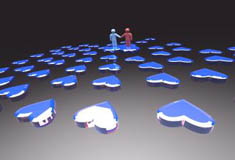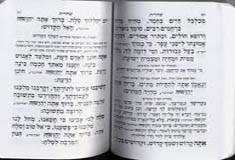Presenting the Components of Tefillin
הרב שי טחןט טבת, תשפד21/12/2023a new series- getting to know your tfilin better
תגיות:תפיליןבתיםתפילה
צילום: שורש תמונות
Get To Know The Batim:
Tefillin, an integral part of Jewish tradition, consist of three main components that contribute to their sacred and meaningful nature. In this upcoming series, we aim to acquaint ourselves with the components of the Tefillin and explore potential issues that one should be mindful of. Join us as we delve into the intricate details of each element and unravel the nuances associated with the construction and maintenance of these sacred artifacts. Together, we'll gain a deeper understanding of the Tefillin and navigate the potential challenges that may arise in their kashrut.
Tefillin and explore potential issues that one should be mindful of. Join us as we delve into the intricate details of each element and unravel the nuances associated with the construction and maintenance of these sacred artifacts. Together, we'll gain a deeper understanding of the Tefillin and navigate the potential challenges that may arise in their kashrut.
These essential elements include:
1. Batim (Boxes): The batim serve as the containers for the parchments. They are typically made from thick, durable leather, often sourced from the hides of domestic cattle. The quality of the batim plays a crucial role in the overall integrity of the Tefillin.
2. Parshiot (Parchments): Inside the batim, there are four distinct parshiot, handwritten scrolls containing specific passages from the Torah. These passages include the Shema and V'ahavta, emphasizing the unity of Hashem the commandment to love and serve Him with all one's heart.
3. Retzuot (Straps): The Tefillin are secured to the arm and head with leather straps known as retzuot. There are two sets of retzuot – one for the arm (shel yad) and one for the head (shel rosh). These straps are meticulously crafted and are an integral part of the Tefillin, symbolizing the binding of the divine commandments upon the wearer.
Exploring the Distinctions between Thin and Thick Tefillin Batim
Batim made from the hides of thin-skinned animals have been used throughout history, and until a few decades ago, the entire Jewish community utilized Tefillin with batim made from the hides of thin-skinned animals. Since the hides are relatively thin, the quality of these batim was not high. Proper processing required a substantial amount of "flesh" in the hide to seal it securely, and thin hides lacked the necessary thickness of flesh.
The distinction between low-quality Tefillin made from thin-skinned animals, known as "Dakot," and those of higher quality made from thick-skinned animals, known as "Gasot," centers around the type of hide utilized.
Tefillin crafted from the hides of thin-skinned animals utilize materials sourced from sheep or goats. The thickness of the partitions of the batim for Tefillin from thin-skinned animals is thinner compared to those of thick-skinned animals, making the Tefillin generally less durable over time than Tefillin from thick-skinned animals. One can find Tefillin made from the hide of thin-skinned animals, but their level of kashrut is very low. As mentioned, their durability over time is compromised, and these Tefillin can easily deteriorate, making the money spent on them regrettable.
For instance, if batim fall onto the floor and one of the corners takes a blow, causing the corner to deform, the Tefillin need to be rewound. Similarly, if an individual sweats heavily on their forehead, creating a significant indentation at the bottom of the batim they would require a repair. In such cases, if the Tefillin were made from the hide of thick skin, the issues could be rectified. A rounded corner could be reshaped, and the bottom of the batim, which has become uneven, could be straightened, restoring the Tefillin to their previous state or even improving them. However, with Tefillin made from the hide of thin-skinned animals, it is nearly impossible to repair damages, as their hides are exceedingly thin and lack the necessary thickness of flesh. Consequently, one is forced to replace them with a new set.
Furthermore, the probability of the batim sustaining damage, whether from falling, hitting a wall, exposure to sweat, or contact with wet hair after a shower, is significantly higher in thin-skin batim compared to their thick-skin counterparts. The same holds true for individuals who might inadvertently leave the Tefillin in extreme temperature conditions, such as in a hot car during a summer day or in a cold environment.
European Hides vs. American Hides: A Comparative Exploration:
The most common type of hide is European. In recent years, merchants have started importing American hides, which are much stronger than European hides. Although they are more expensive, it is highly recommended to purchase them because Tefillin made from such hides are much stronger, more beautiful, and durable over many years.
Salted Hides vs. Sweetened:
As these hides come from outside the country, there is another halachic issue. As they must be transported, a method for storing them is essential to prevent spoilage and rotting. Consequently, salting becomes a crucial step, yet it raises concerns. Some poskim maintain that salting marks the initiation of a process known as "עיבוד" (tanning), and as this salting is done by a non-Jew, it is considered disqualifying.
The resolution to this issue would be to replace the salting process with the use of sugar, as it is not considered part of the processing.
Tefillin, an integral part of Jewish tradition, consist of three main components that contribute to their sacred and meaningful nature. In this upcoming series, we aim to acquaint ourselves with the components of the

צילום: שורש תמונות
These essential elements include:
1. Batim (Boxes): The batim serve as the containers for the parchments. They are typically made from thick, durable leather, often sourced from the hides of domestic cattle. The quality of the batim plays a crucial role in the overall integrity of the Tefillin.
2. Parshiot (Parchments): Inside the batim, there are four distinct parshiot, handwritten scrolls containing specific passages from the Torah. These passages include the Shema and V'ahavta, emphasizing the unity of Hashem the commandment to love and serve Him with all one's heart.
3. Retzuot (Straps): The Tefillin are secured to the arm and head with leather straps known as retzuot. There are two sets of retzuot – one for the arm (shel yad) and one for the head (shel rosh). These straps are meticulously crafted and are an integral part of the Tefillin, symbolizing the binding of the divine commandments upon the wearer.
Exploring the Distinctions between Thin and Thick Tefillin Batim
Batim made from the hides of thin-skinned animals have been used throughout history, and until a few decades ago, the entire Jewish community utilized Tefillin with batim made from the hides of thin-skinned animals. Since the hides are relatively thin, the quality of these batim was not high. Proper processing required a substantial amount of "flesh" in the hide to seal it securely, and thin hides lacked the necessary thickness of flesh.
The distinction between low-quality Tefillin made from thin-skinned animals, known as "Dakot," and those of higher quality made from thick-skinned animals, known as "Gasot," centers around the type of hide utilized.
Tefillin crafted from the hides of thin-skinned animals utilize materials sourced from sheep or goats. The thickness of the partitions of the batim for Tefillin from thin-skinned animals is thinner compared to those of thick-skinned animals, making the Tefillin generally less durable over time than Tefillin from thick-skinned animals. One can find Tefillin made from the hide of thin-skinned animals, but their level of kashrut is very low. As mentioned, their durability over time is compromised, and these Tefillin can easily deteriorate, making the money spent on them regrettable.
For instance, if batim fall onto the floor and one of the corners takes a blow, causing the corner to deform, the Tefillin need to be rewound. Similarly, if an individual sweats heavily on their forehead, creating a significant indentation at the bottom of the batim they would require a repair. In such cases, if the Tefillin were made from the hide of thick skin, the issues could be rectified. A rounded corner could be reshaped, and the bottom of the batim, which has become uneven, could be straightened, restoring the Tefillin to their previous state or even improving them. However, with Tefillin made from the hide of thin-skinned animals, it is nearly impossible to repair damages, as their hides are exceedingly thin and lack the necessary thickness of flesh. Consequently, one is forced to replace them with a new set.
Furthermore, the probability of the batim sustaining damage, whether from falling, hitting a wall, exposure to sweat, or contact with wet hair after a shower, is significantly higher in thin-skin batim compared to their thick-skin counterparts. The same holds true for individuals who might inadvertently leave the Tefillin in extreme temperature conditions, such as in a hot car during a summer day or in a cold environment.
European Hides vs. American Hides: A Comparative Exploration:
The most common type of hide is European. In recent years, merchants have started importing American hides, which are much stronger than European hides. Although they are more expensive, it is highly recommended to purchase them because Tefillin made from such hides are much stronger, more beautiful, and durable over many years.
Salted Hides vs. Sweetened:
As these hides come from outside the country, there is another halachic issue. As they must be transported, a method for storing them is essential to prevent spoilage and rotting. Consequently, salting becomes a crucial step, yet it raises concerns. Some poskim maintain that salting marks the initiation of a process known as "עיבוד" (tanning), and as this salting is done by a non-Jew, it is considered disqualifying.
The resolution to this issue would be to replace the salting process with the use of sugar, as it is not considered part of the processing.
הוסף תגובה
עוד מהרב שי טחן
עוד בנושא הלכה








